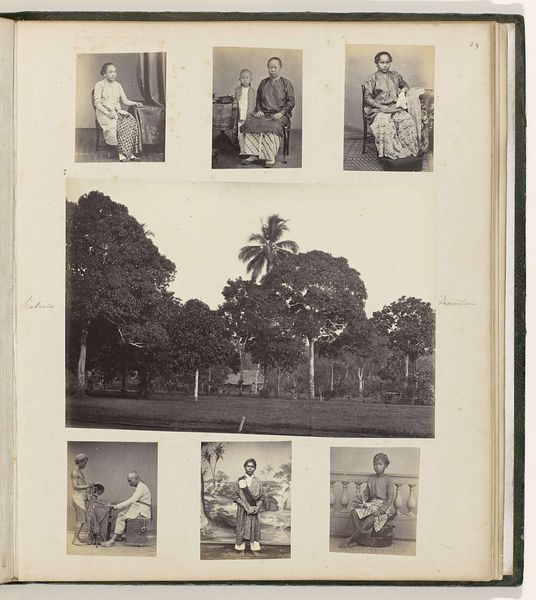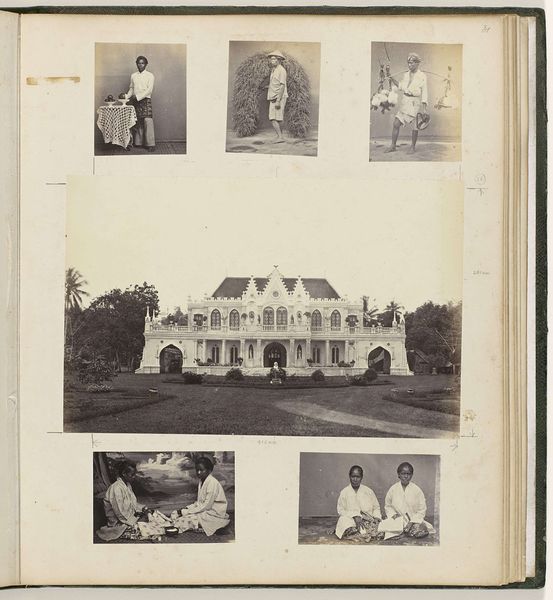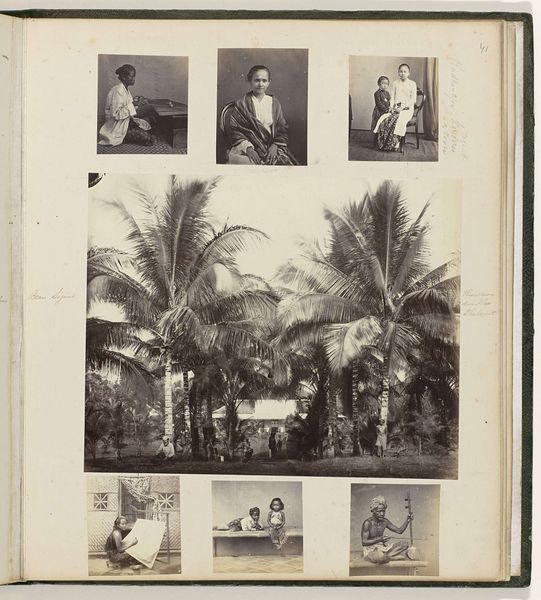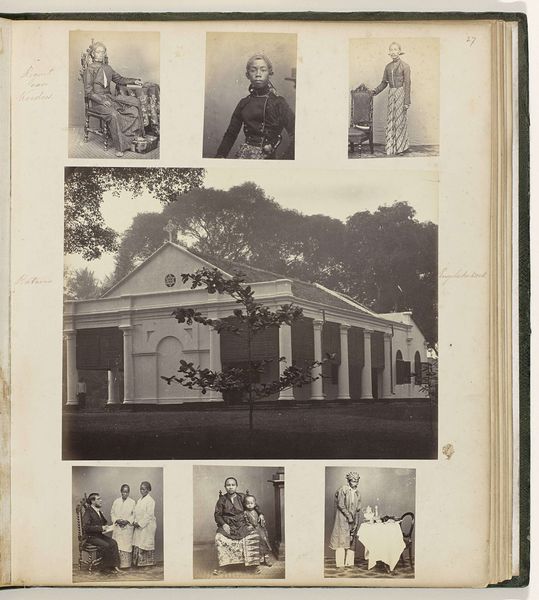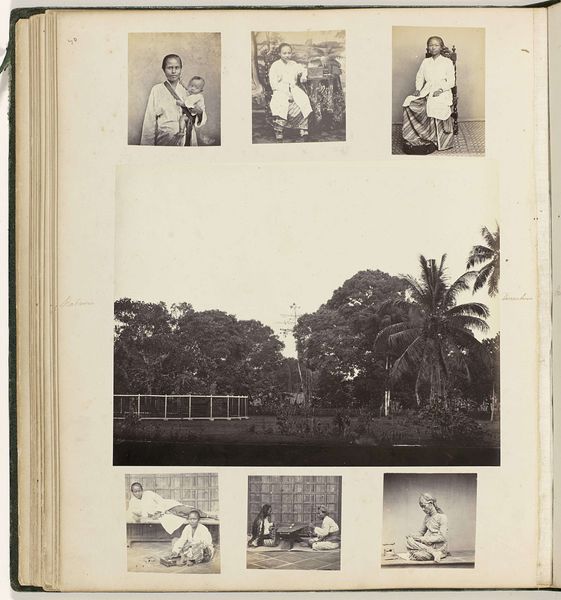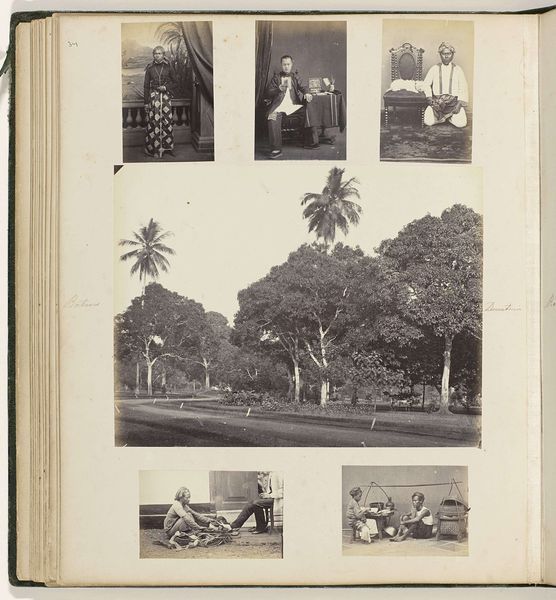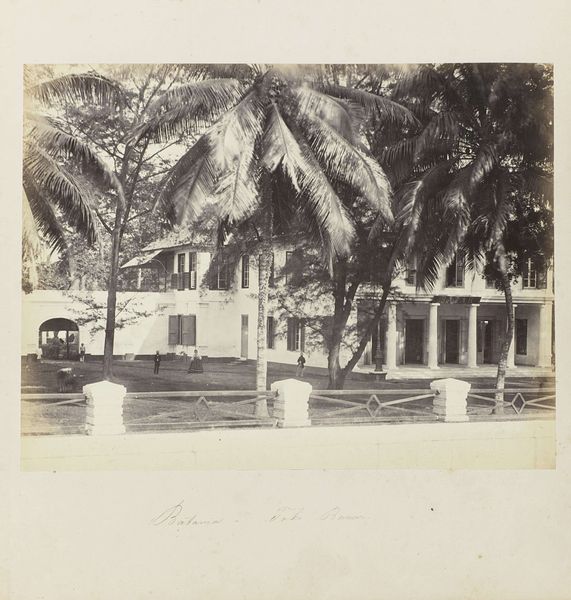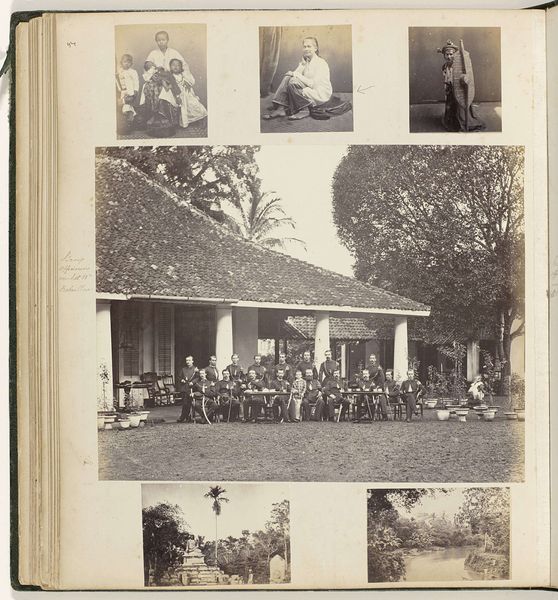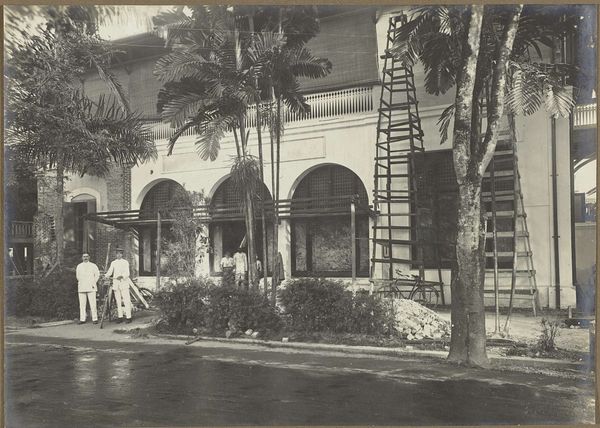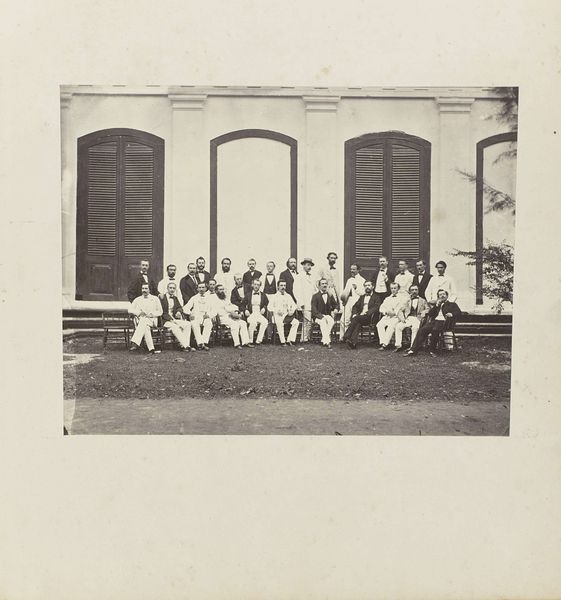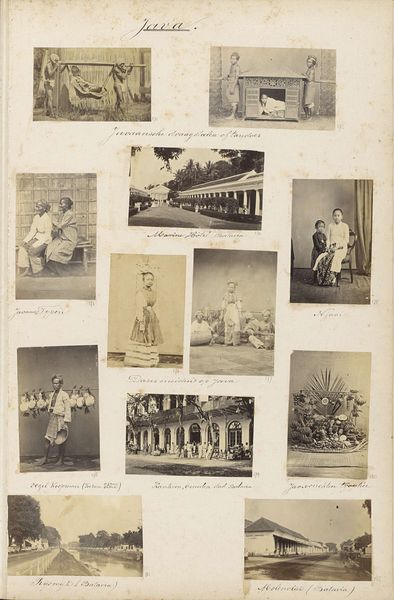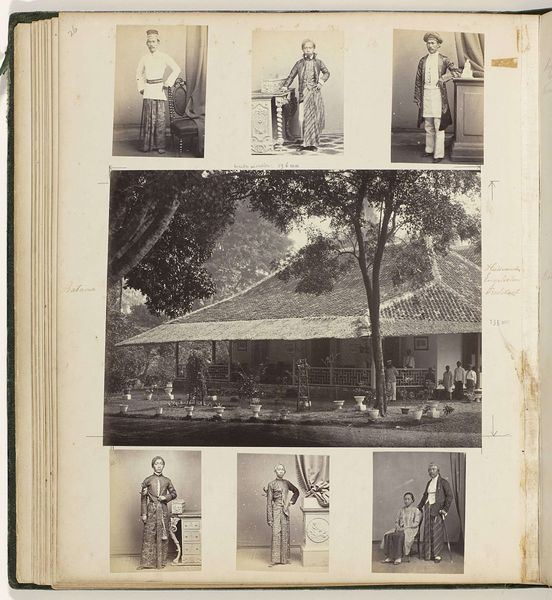
photography, albumen-print
#
portrait
#
landscape
#
photography
#
cityscape
#
albumen-print
Dimensions: height 365 mm, width 305 mm, height 180 mm, width 240 mm, height 80 mm, width 60 mm
Copyright: Rijks Museum: Open Domain
This page from an album by Woodbury & Page combines albumen prints of an Indonesian house with portraits of its inhabitants. The albumen process, which dominated photography in the latter half of the 19th century, involved coating paper with egg white and silver nitrate, then exposing it to light through a negative. This was a labor-intensive method, requiring skill in chemistry, and an infrastructure to produce the prints in quantity. The sharp detail and tonal range visible here were prized attributes. While the images depict a specific place and people, the albumen print itself is tied to wider social issues of labor, politics, and consumption. The collodion process enabled the mass production of images, and therefore their wide circulation. The family that commissioned these portraits may have regarded them as intimate mementos. Yet they are inseparable from the commercial ambitions of Woodbury & Page, who sought to profit from the colonial encounter. Appreciating this context allows us to understand the photographs as more than just documents, but as artifacts embedded in a complex social fabric.
Comments
No comments
Be the first to comment and join the conversation on the ultimate creative platform.
